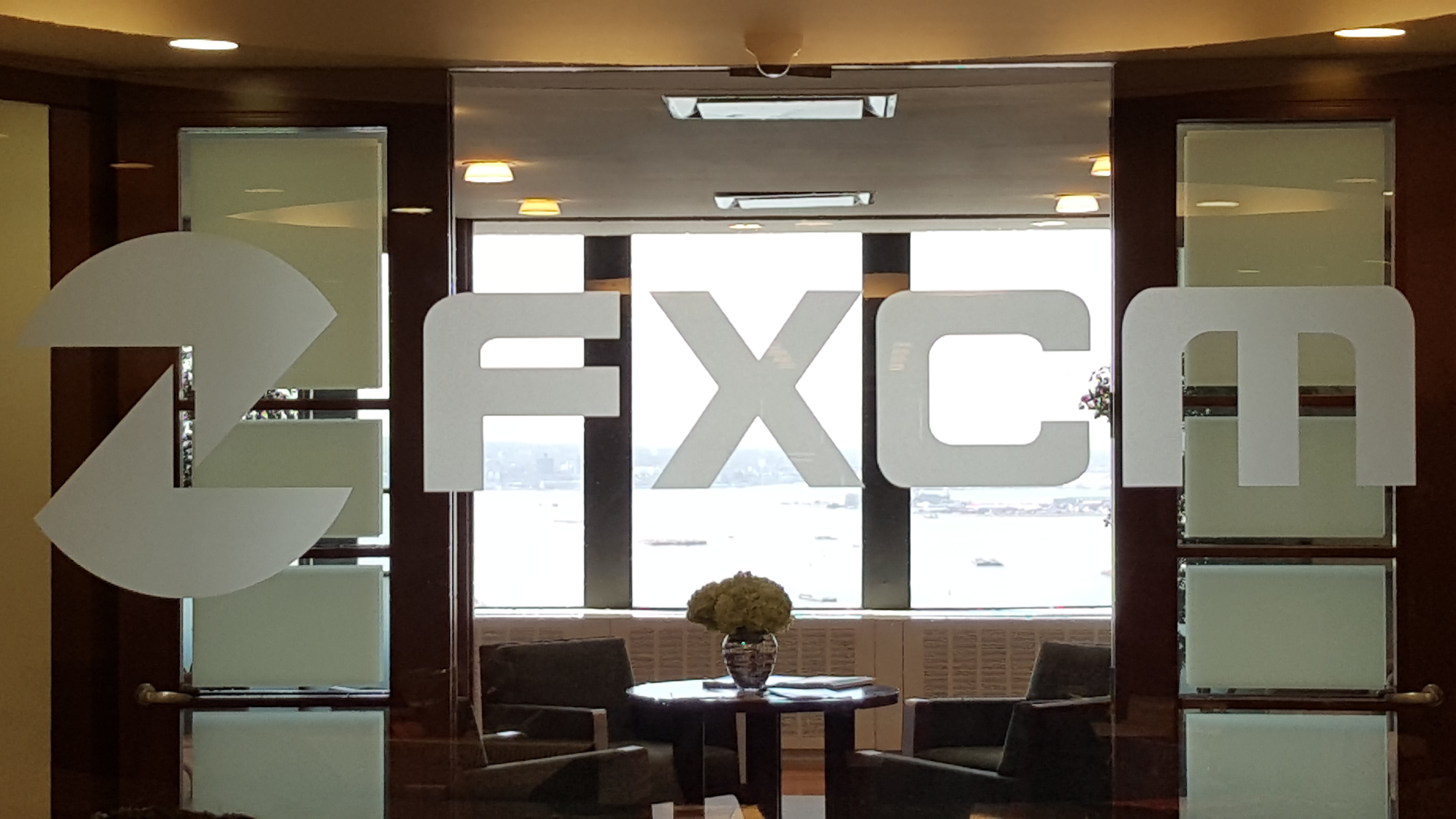Last week, FXCM Group announced a refresh of the company’s institutionally-focused business FXCM Pro. The firm committed to a radical reshaping of the offering, opening the doors to new products and a brand new team.
We sat down with the senior management team of FXCM Pro and elaborated on the new product and some misconceptions about prime of prime brokers today.
FM: Could you share the team behind the development and sales of the new FXCM Pro product?
FXCM Pro: Absolutely. The team is led by our Chief Commercial Officer, Siju Daniel, an FXCM veteran who has demonstrated enormous success in running our Asian operations. He is joined by Mario Sanchez who was recently promoted to Managing Director for FXCM Pro and has over 12 years of experience in the global institutional space, and Justin Boulton, with over 20 years of industry experience as the Head of FXCM Prime. In addition, we have Fady Tadrous, who is building our Arabic FXCM Pro client base, Kenneth Wong and Vladimir Livshits leading our APAC institutional desk, whilst Trent Earwaker and James Taylor are leading the institutional Europe desk.
FM: How have you reinvented FXCM Pro what’s new, what’s missing from before and why?
FXCM Pro: We took a multi-pronged approach to reinvent FXCM Pro. We looked closely at a range of different areas such as hiring the right people, enhancing our product offering and partnering with the right service providers.
One important aspect was to ensure we had the best team in place to take FXCM Pro to the next level. We’re lucky to have a group of extremely talented people in the industry working for us already, so we focused on leveraging their experience to focus on the department. We’re pleased with the team we built and promoted various tenured FXCM employees to focus on specific areas of the institutional business. This has allowed FXCM Pro to continue to focus its efforts on what’s most important - our clients.
In addition, we took the opportunity to significantly re-structure the department, making it leaner and more efficient. Gone are the days where valuable feedback is funneled through tiered groups of management, but rather, our executive team plays a crucial role in the day-to-day management. This is already proving to be a much more transparent, and results-orientated approach.
From a product offering standpoint, we focused on enhancing our existing offering, by seeking quality client feedback, and in turn committing to the necessary steps to deliver solutions. As a result, we now have a stronger service, particularly for CFDs, and welcome algorithmic flow on CFDs without restrictions. This means that if a broker wants a Liquidity
Liquidity
The term liquidity refers to the process, speed, and ease of which a given asset or security can be converted into cash. Notably, liquidity surmises a retention in market price, with the most liquid assets representing cash.The most liquid asset of all is cash itself.· In economics, liquidity is defined by how efficiently and quickly an asset can be converted into usable cash without materially affecting its market price. · Nothing is more liquid than cash, while other assets represent
The term liquidity refers to the process, speed, and ease of which a given asset or security can be converted into cash. Notably, liquidity surmises a retention in market price, with the most liquid assets representing cash.The most liquid asset of all is cash itself.· In economics, liquidity is defined by how efficiently and quickly an asset can be converted into usable cash without materially affecting its market price. · Nothing is more liquid than cash, while other assets represent
Read this Term provider that can handle that flow on FX or CFDs, FXCM Pro is by far the best option available.
It’s important to note that whilst this process was underway; we were still catering to FXCM Pros’ client base seeking execution, liquidity, and clearing solutions. We serviced a wide range of wholesale clients who continued to utilize FXCM Pro’s services. This meant we could successfully upgrade our offering in parallel to providing excellent service to our customers.
FM: Is it going to be co-branded with Leucadia like the brokerage is?
FXCM Pro: Yes. We’re really pleased to be part of the Leucadia family and believe it’s helping us to promote all areas of the business. We’ve implemented the co-branding on all FXCM’s different services since we’ve become part of the group.
The State of Prime of Prime Brokers
FM: It seems as though there are a few interpretations of what prime-of-prime means to different participants – so what is a “real” prime-of-prime?
FXCM Pro: It’s in the interests of the so-called “prime-of-primes” (POPs) to maintain the ambiguity of what exactly constitutes a prime-of-prime provider. This way, they can keep calling themselves a POP when in reality, they’re just offering liquidity and execution services and dressing it up as prime-of-prime.
A real prime-of-prime is a neutral intermediary that offers a pure clearing solution with direct market access – it does not operate a liquidity pool of its own.
The litmus test for finding a “true” POP is if you call a prime-of-prime broker and they start talking about their fill rates, spreads and latency times. A real prime-of-prime doesn’t get involved in those discussions, all they do is give clients direct market access to a number of ECNs.
FXCM is one of the few POPs out there which does offer a true FX prime brokerage service. What we mean by this, is that we offer a service akin to that which you would receive from a tier one prime broker, albeit with much faster onboard times, and a far lower cost of entry than tier ones.
FM: Can you explain how FXCM’s prime-of-prime offering is different?
FXCM Pro: FXCM, as a true prime-of-prime broker, seeks to offer efficient and cost-effective access to a broad range of trading venues through a single account, leading to lower margin requirements and freeing up cash flow to be used in other operations.
When a customer connects through FXCM Prime, they sign an FX prime brokerage contract with us, and we act purely as a clearer. They are also obligated to sign legal contracts with each individual platform and are subject to their rules. This allows them to have a direct relationship with individual platforms but with the added benefit of being able to clear trades through FXCM Prime via a single NOP.
FXCM Prime clients only need to write to a single API, whether they are trading on a single venue or all of the venues we offer. Our pre-trade credit solution also provides aggregation, SOR, and TCA capabilities if required and all back office requirements are met by FXCM for our prime-of-prime clients.
Our prime-of-prime offering is not a mass-market business, and the majority of FXCM Prime’s customers are small and medium-sized institutions. We pride ourselves on providing comprehensive and tailored customer service. We have a sizeable team in our prime brokerage division – ensuring that our customers receive the best possible support at all times.
We’re also very proud of our on-boarding speed, with the majority of our clients set up and trading within four weeks, with a very high level of service provided once a client is live.
FM: What, in your view, is the biggest challenge for prime-of-prime?
FXCM Pro: One of the biggest challenges for both prime brokers and prime clients is how to manage credit lines efficiently across a range of platforms. The prices offered by different platforms vary significantly, meaning that customers may want to trade across multiple platforms in order to get the best prices or hedge their exposure effectively.
If a customer is allocated a net-open position of USD100 million, for example, and has access to 10 trading venues, some prime brokers can only offer USD10 million for each platform to ensure fair access and distribution of capital across trading venues.
This is not an efficient model. It limits a customer’s ability to trade on their preferred venue, and some may feel compelled to trade on a platform that isn’t offering the best price due to their inability to utilize their trading capital in full.
Some prime brokers have occasionally found themselves extending credit lines of USD100 million for each venue, exposing them to significant risk if their customers were to default. When replicated across hundreds of customers, these institutions become a potential source of systemic risk.
In order to mitigate this risk, FXCM Prime is underpinned by unique low-latency software that conducts a pre-trade credit check on every trade. As each user can connect to multiple platforms via a single account, the total number of open positions is closely monitored, and any orders that exceed a user’s agreed credit line will be automatically rejected.
FXCM Prime can, therefore, limit users’ total exposure, regardless of which platform, or platforms, they trade on. Pre-trade credit and post-trade credit checks are also performed on all venues to ensure that they meet strict criteria.
Technology and Third-Party Integration
FM: Can you elaborate more on the technology and aggregation side – which platforms are supported, APIs, liquidity, etc.
FXCM Pro: In terms of APIs, FXCM's Institutional API access offers professional and institutional users the ability to tailor pricing on a per instrument, per account basis. Following a mandate from our customers, FXCM’s liquidity management team can source the most efficient liquidity providers and partnering venues to match clients’ needs, be it single tickets on large orders, stickier pricing intraday on metals, and more.
Clients can automate their trading and applications via FIX, .NET, and Java, with functionality including all orders types, streaming market depth, and reporting based API solutions.
Using FXCM's connectivity and networking infrastructure, traders can also reduce costs and time to market, with increased connectivity speed in emerging markets and close proximity to FXCM’s matching engines enabling ultra low-latency connectivity.
FM: Are you planning to offer tech from third parties for Risk Management
Risk Management
One of the most common terms utilized by brokers, risk management refers to the practice of identifying potential risks in advance. Most commonly, this also involves the analysis of risk and the undertaking of precautionary steps to both mitigate and prevent for such risk.Such efforts are essential for brokers and venues in the finance industry, given the potential for fallout in the face of unforeseen events or crises. Given a more tightly regulated environment across nearly every asset class,
One of the most common terms utilized by brokers, risk management refers to the practice of identifying potential risks in advance. Most commonly, this also involves the analysis of risk and the undertaking of precautionary steps to both mitigate and prevent for such risk.Such efforts are essential for brokers and venues in the finance industry, given the potential for fallout in the face of unforeseen events or crises. Given a more tightly regulated environment across nearly every asset class,
Read this Term, bridges, back office, CRM, etc. or do you have in-house solutions?
FXCM Pro: We have an ecosystem of partners and third parties which enables traders to easily access additional platforms and liquidity solutions. FXCM platforms and liquidity solutions are integrated to all major bridge providers, including OneZero, Gold-I, and PrimeXM, as well as a variety of third-party technologies including ECNs, platform providers, and charting packages.
Last week, FXCM Group announced a refresh of the company’s institutionally-focused business FXCM Pro. The firm committed to a radical reshaping of the offering, opening the doors to new products and a brand new team.
We sat down with the senior management team of FXCM Pro and elaborated on the new product and some misconceptions about prime of prime brokers today.
FM: Could you share the team behind the development and sales of the new FXCM Pro product?
FXCM Pro: Absolutely. The team is led by our Chief Commercial Officer, Siju Daniel, an FXCM veteran who has demonstrated enormous success in running our Asian operations. He is joined by Mario Sanchez who was recently promoted to Managing Director for FXCM Pro and has over 12 years of experience in the global institutional space, and Justin Boulton, with over 20 years of industry experience as the Head of FXCM Prime. In addition, we have Fady Tadrous, who is building our Arabic FXCM Pro client base, Kenneth Wong and Vladimir Livshits leading our APAC institutional desk, whilst Trent Earwaker and James Taylor are leading the institutional Europe desk.
FM: How have you reinvented FXCM Pro what’s new, what’s missing from before and why?
FXCM Pro: We took a multi-pronged approach to reinvent FXCM Pro. We looked closely at a range of different areas such as hiring the right people, enhancing our product offering and partnering with the right service providers.
One important aspect was to ensure we had the best team in place to take FXCM Pro to the next level. We’re lucky to have a group of extremely talented people in the industry working for us already, so we focused on leveraging their experience to focus on the department. We’re pleased with the team we built and promoted various tenured FXCM employees to focus on specific areas of the institutional business. This has allowed FXCM Pro to continue to focus its efforts on what’s most important - our clients.
In addition, we took the opportunity to significantly re-structure the department, making it leaner and more efficient. Gone are the days where valuable feedback is funneled through tiered groups of management, but rather, our executive team plays a crucial role in the day-to-day management. This is already proving to be a much more transparent, and results-orientated approach.
From a product offering standpoint, we focused on enhancing our existing offering, by seeking quality client feedback, and in turn committing to the necessary steps to deliver solutions. As a result, we now have a stronger service, particularly for CFDs, and welcome algorithmic flow on CFDs without restrictions. This means that if a broker wants a Liquidity
Liquidity
The term liquidity refers to the process, speed, and ease of which a given asset or security can be converted into cash. Notably, liquidity surmises a retention in market price, with the most liquid assets representing cash.The most liquid asset of all is cash itself.· In economics, liquidity is defined by how efficiently and quickly an asset can be converted into usable cash without materially affecting its market price. · Nothing is more liquid than cash, while other assets represent
The term liquidity refers to the process, speed, and ease of which a given asset or security can be converted into cash. Notably, liquidity surmises a retention in market price, with the most liquid assets representing cash.The most liquid asset of all is cash itself.· In economics, liquidity is defined by how efficiently and quickly an asset can be converted into usable cash without materially affecting its market price. · Nothing is more liquid than cash, while other assets represent
Read this Term provider that can handle that flow on FX or CFDs, FXCM Pro is by far the best option available.
It’s important to note that whilst this process was underway; we were still catering to FXCM Pros’ client base seeking execution, liquidity, and clearing solutions. We serviced a wide range of wholesale clients who continued to utilize FXCM Pro’s services. This meant we could successfully upgrade our offering in parallel to providing excellent service to our customers.
FM: Is it going to be co-branded with Leucadia like the brokerage is?
FXCM Pro: Yes. We’re really pleased to be part of the Leucadia family and believe it’s helping us to promote all areas of the business. We’ve implemented the co-branding on all FXCM’s different services since we’ve become part of the group.
The State of Prime of Prime Brokers
FM: It seems as though there are a few interpretations of what prime-of-prime means to different participants – so what is a “real” prime-of-prime?
FXCM Pro: It’s in the interests of the so-called “prime-of-primes” (POPs) to maintain the ambiguity of what exactly constitutes a prime-of-prime provider. This way, they can keep calling themselves a POP when in reality, they’re just offering liquidity and execution services and dressing it up as prime-of-prime.
A real prime-of-prime is a neutral intermediary that offers a pure clearing solution with direct market access – it does not operate a liquidity pool of its own.
The litmus test for finding a “true” POP is if you call a prime-of-prime broker and they start talking about their fill rates, spreads and latency times. A real prime-of-prime doesn’t get involved in those discussions, all they do is give clients direct market access to a number of ECNs.
FXCM is one of the few POPs out there which does offer a true FX prime brokerage service. What we mean by this, is that we offer a service akin to that which you would receive from a tier one prime broker, albeit with much faster onboard times, and a far lower cost of entry than tier ones.
FM: Can you explain how FXCM’s prime-of-prime offering is different?
FXCM Pro: FXCM, as a true prime-of-prime broker, seeks to offer efficient and cost-effective access to a broad range of trading venues through a single account, leading to lower margin requirements and freeing up cash flow to be used in other operations.
When a customer connects through FXCM Prime, they sign an FX prime brokerage contract with us, and we act purely as a clearer. They are also obligated to sign legal contracts with each individual platform and are subject to their rules. This allows them to have a direct relationship with individual platforms but with the added benefit of being able to clear trades through FXCM Prime via a single NOP.
FXCM Prime clients only need to write to a single API, whether they are trading on a single venue or all of the venues we offer. Our pre-trade credit solution also provides aggregation, SOR, and TCA capabilities if required and all back office requirements are met by FXCM for our prime-of-prime clients.
Our prime-of-prime offering is not a mass-market business, and the majority of FXCM Prime’s customers are small and medium-sized institutions. We pride ourselves on providing comprehensive and tailored customer service. We have a sizeable team in our prime brokerage division – ensuring that our customers receive the best possible support at all times.
We’re also very proud of our on-boarding speed, with the majority of our clients set up and trading within four weeks, with a very high level of service provided once a client is live.
FM: What, in your view, is the biggest challenge for prime-of-prime?
FXCM Pro: One of the biggest challenges for both prime brokers and prime clients is how to manage credit lines efficiently across a range of platforms. The prices offered by different platforms vary significantly, meaning that customers may want to trade across multiple platforms in order to get the best prices or hedge their exposure effectively.
If a customer is allocated a net-open position of USD100 million, for example, and has access to 10 trading venues, some prime brokers can only offer USD10 million for each platform to ensure fair access and distribution of capital across trading venues.
This is not an efficient model. It limits a customer’s ability to trade on their preferred venue, and some may feel compelled to trade on a platform that isn’t offering the best price due to their inability to utilize their trading capital in full.
Some prime brokers have occasionally found themselves extending credit lines of USD100 million for each venue, exposing them to significant risk if their customers were to default. When replicated across hundreds of customers, these institutions become a potential source of systemic risk.
In order to mitigate this risk, FXCM Prime is underpinned by unique low-latency software that conducts a pre-trade credit check on every trade. As each user can connect to multiple platforms via a single account, the total number of open positions is closely monitored, and any orders that exceed a user’s agreed credit line will be automatically rejected.
FXCM Prime can, therefore, limit users’ total exposure, regardless of which platform, or platforms, they trade on. Pre-trade credit and post-trade credit checks are also performed on all venues to ensure that they meet strict criteria.
Technology and Third-Party Integration
FM: Can you elaborate more on the technology and aggregation side – which platforms are supported, APIs, liquidity, etc.
FXCM Pro: In terms of APIs, FXCM's Institutional API access offers professional and institutional users the ability to tailor pricing on a per instrument, per account basis. Following a mandate from our customers, FXCM’s liquidity management team can source the most efficient liquidity providers and partnering venues to match clients’ needs, be it single tickets on large orders, stickier pricing intraday on metals, and more.
Clients can automate their trading and applications via FIX, .NET, and Java, with functionality including all orders types, streaming market depth, and reporting based API solutions.
Using FXCM's connectivity and networking infrastructure, traders can also reduce costs and time to market, with increased connectivity speed in emerging markets and close proximity to FXCM’s matching engines enabling ultra low-latency connectivity.
FM: Are you planning to offer tech from third parties for Risk Management
Risk Management
One of the most common terms utilized by brokers, risk management refers to the practice of identifying potential risks in advance. Most commonly, this also involves the analysis of risk and the undertaking of precautionary steps to both mitigate and prevent for such risk.Such efforts are essential for brokers and venues in the finance industry, given the potential for fallout in the face of unforeseen events or crises. Given a more tightly regulated environment across nearly every asset class,
One of the most common terms utilized by brokers, risk management refers to the practice of identifying potential risks in advance. Most commonly, this also involves the analysis of risk and the undertaking of precautionary steps to both mitigate and prevent for such risk.Such efforts are essential for brokers and venues in the finance industry, given the potential for fallout in the face of unforeseen events or crises. Given a more tightly regulated environment across nearly every asset class,
Read this Term, bridges, back office, CRM, etc. or do you have in-house solutions?
FXCM Pro: We have an ecosystem of partners and third parties which enables traders to easily access additional platforms and liquidity solutions. FXCM platforms and liquidity solutions are integrated to all major bridge providers, including OneZero, Gold-I, and PrimeXM, as well as a variety of third-party technologies including ECNs, platform providers, and charting packages.






















